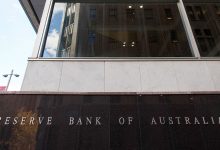The Reserve Bank of Australia has dramatically changed the terms of its energy tender, from a 10 per cent share of green energy to 100 per cent green energy – just hours after the details of the original tender documents were were highlighted by RenewEconomy.
As RenewEconomy wrote on Monday, the RBA’s energy tender set a remarkably small target for green energy given the major shift by big business – including Australia’s big banks – to set a 100 per cent renewable energy target for their electricity supply, and given the RBA’s own strong warnings about the systemic threats of climate change and the need for business to act with urgency.
See Central banks, including RBA, urge rapid coal phase-out to meet Paris climate goals
The RBA’s original tender document – filed on August 6 – was quite specific: A 10 per cent share of green energy across the 10 installations it operates in NSW, Victoria, and the ACT and to accommodate its annual demand of near 27 gigawatt hours.
The documents noted that the Victoria green share would be delivered by a 1MW rooftop solar array it plans for its Craigieburn note printing facility. The additional GreenPower certificates would only be needed for the NSW and ACT facilities.
The tender addendum filed last night to the Austender site advises of a “change in wording”.
“The Reserve Bank is also seeking proposals and pricing for 100% of total demand as GreenPower® accredited renewable energy for all buildings in NSW, ACT and VIC,” it now says.
The difference between GreenPower and a direct contract with wind and solar farms (as most other businesses do), is that GreenPower is satisfied by large scale certificates purchased by energy retailers.
Some people suggest it does not result in any new construction of wind and solar farms. Others say this is not true, because the LGCs for this purpose are put into a dedicated account that is not used to meet legislated targets. But, as the RBA says, the need to displace coal is clear: See Central banks, including RBA, urge rapid coal phase-out to meet Paris climate goals
GreenPower usually ends up being more expensive, as the cost of the certificates is usually added to the cost of the energy supply, rather than priced as an alternative in a distinct power purchase agreement – a transaction that is nevertheless usually complicated by the need for hedging products to align the output with the demand.
Still, it a welcome change. The original tender document may have been downplayed behind the scenes at the RBA as an “error”, but at least it was quickly changed when identified. Energy suppliers have three weeks to come up with their proposals.
Now, if only the federal government would react the same way and with similar speed ….











